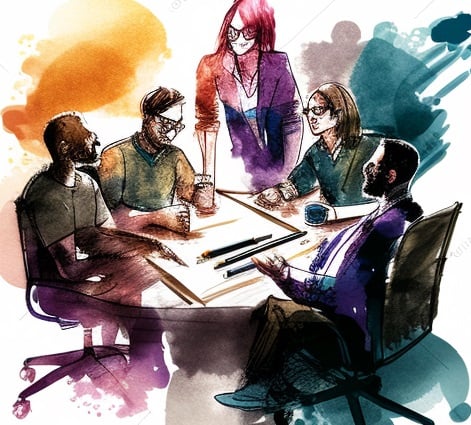What is an Inclusive Workplace... Really?
Aspiring towards inclusion at work isn’t a new idea. When Workplace 2000 (Boyett & Conn 1992) was published, leaders were starting to look for ways to more effectively engage women and minorities into the social fabric of the organization. Although rights had been somewhat advanced in the late 1960s and early 1970s, the way people behaved and treated each other, particularly at work, was slower to change.
Companies today aim to continue this slow, yet steady process of transformation.
But what does it mean to be inclusive? And more importantly, how can an organization take steps to become more inclusive? To answer these questions, we look to some of the well established research that’s been done in the past three decades.

Inclusion means that the employee has been integrated into the institutional environment and workgroup interactions on three levels: physical inclusion (access to places, materials, and resources that are needed to do the job), functional inclusion (access to work processes and information flows), and social inclusion (access to people and constructive interactions that help you get things done). (Schleien et al. 2003; Silver 2015)
Social inclusion is usually where organizations focus, but focusing on making sure everyone feels like an insider can be counterproductive. This is because employees can feel excluded even when they are being physically, functionally, and socially included. Why? Because people come into organizations with unique emotional perspectives, past experiences, and expectations and assumptions for the job they’re about to begin. These include their:
- Understanding of the employment contract, including roles, responsibilities, rewards, and boundaries
- Understanding of the social contract and the values they are agreeing to demonstrate
- Expectations and assumptions about “organizational justice” (the degree to which processes and supervisory relationships can be fair and equitable)
- Social information processing model, that will influence how they perceive interactions with others, and
- Past traumas that serve as a lens through which all things are experienced.
Inclusion is not a culture built by leaders and “given” to the members of their organizations. Rather, it is built or destroyed in every interaction employees have with their managers or each other. Focusing on organizational structures, policies, and procedures is the key because organization’s can influence, but not control, what’s inside the mind and past experiences of each employee.
“The current conception of ‘inclusive organisations’ does not emphasise power struggles during change processes but focuses on the subsequent period when ‘everybody feels and is treated like an insider’... [because] transformation efforts go hand in hand with (re-)distribution [of scarce resources] and power struggles, the vision of an ‘inclusive organisation’ as a win-win situation for all organisational members becomes questionable. Therefore, it is all the more important to accurately specify the beneficiaries of including/inclusive measures and concentrate on the adaptation of organisational structures, instead of on the personal attitudes of organisational members.” – Dobusch (2014)
An inclusive organization, then, is one that has adapted its structure, its policies, and its procedures to ensure that everyone is able to gain access (on an institutional level as well as a workgroup level) to essential physical resources, processes or information flows, and the people and interactions that will help them carry out the requirements of their roles.
Ultranauts is on a mission to demonstrate that neurodiversity is a competitive advantage for business. In the Inclusive EnterpriseTM program, Ultranauts provides high-impact guidance to help companies achieve inclusion at scale - by customizing, monitoring, and continually improving Inclusive Practices to enhance performance. By cultivating a Universal Workplace, everyone can thrive. The company also provides software quality assurance services, data ecosystem integration and data quality services, and accessibility testing, training, and developer support.
Additional Reading:
Boyett, J. H., & Conn, H. P. (1991). Workplace 2000: The revolution reshaping American business. Plume Books.
Dobusch, L. (2014). How exclusive are inclusive organisations? Equality, Diversity and Inclusion: An International Journal.
Schleien, S., Green, F., & Stone, C. (2003). Making friends within inclusive community recreation programs. Amer. J. of Recreational Therapy, 2(1), 7-16.
Silver, H. (2015). The contexts of social inclusion. DESA Working Paper #144. October. Department of Economic and Social Affairs, United Nations (UN).

